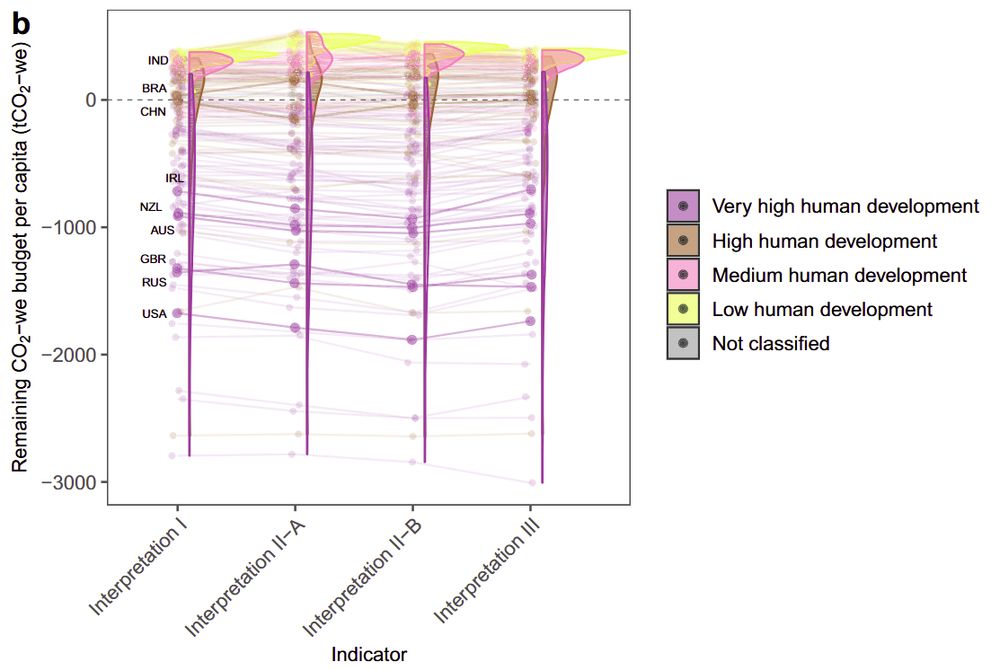






We find some evidence of long-term temperature equivalence, but.. high overshoot remains risky. See: www.nature.com/articles/s41...
Avoiding the debt in the first place is better.

We find some evidence of long-term temperature equivalence, but.. high overshoot remains risky. See: www.nature.com/articles/s41...
Avoiding the debt in the first place is better.
📉 Per-capita carbon drawdown obligations
🌡️ Years of life exposed to 1-in-100-year heatwaves
These diverge sharply across regions and grow worse under a pessimistic current policy scenario.

📉 Per-capita carbon drawdown obligations
🌡️ Years of life exposed to 1-in-100-year heatwaves
These diverge sharply across regions and grow worse under a pessimistic current policy scenario.
Current Policies (¬3C), and Announced Pledges (¬1.8C).
First, we illustrate accrued debts and responsibility for overshoot in either case...

Current Policies (¬3C), and Announced Pledges (¬1.8C).
First, we illustrate accrued debts and responsibility for overshoot in either case...
Some regions always accrue debt due to past emissions.
Some if they delay net-zero CO2 until late this century.
Some only if they push net-zero CO2 past 2100.
Each case implies different responsibilities for drawdown—and for overshoot harms.

Some regions always accrue debt due to past emissions.
Some if they delay net-zero CO2 until late this century.
Some only if they push net-zero CO2 past 2100.
Each case implies different responsibilities for drawdown—and for overshoot harms.
Any excess is debt: emissions that need to be drawn down later, making overshoot worse and harder to reverse.
(for a discussion on fair shares - see link👇)

Any excess is debt: emissions that need to be drawn down later, making overshoot worse and harder to reverse.
(for a discussion on fair shares - see link👇)




1️⃣Foundational principles – which principles are important?
2️⃣Allocation quantity – what are we allocating exactly?
3️⃣Allocation approach – how is it shared out?
4️⃣Indicators – what data do we need?
(and, what does this mean for all others).

1️⃣Foundational principles – which principles are important?
2️⃣Allocation quantity – what are we allocating exactly?
3️⃣Allocation approach – how is it shared out?
4️⃣Indicators – what data do we need?
(and, what does this mean for all others).




